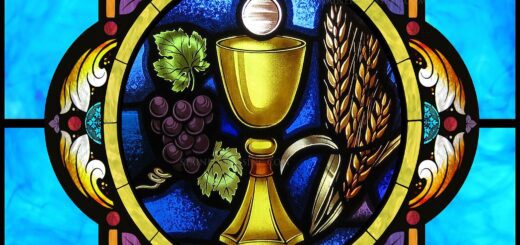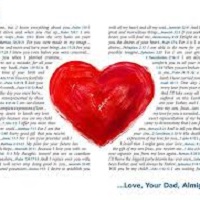A Living Blueprint
A Living Blueprint – July 16th, 2023 (Acts 3:1-4:3)
We are starting in Acts chapter 3 today. Please listen to the story for now; in a few minutes I will invite you to follow along in the Bible.
“One day Peter and John were going up to the temple at the hour of prayer, at three o’clock in the afternoon. And a man lame from birth was being carried in. People would lay him daily at the gate of the temple called the Beautiful Gate so that he could ask for alms from those entering the temple. When he saw Peter and John about to go into the temple, he asked them for alms. Peter coughed loudly and hurried into the Temple, hoping nobody noticed his lack of response.”
Is that what happened? Let’s try that again.
“People would lay him daily at the gate of the temple called the Beautiful Gate so that he could ask for alms from those entering the temple. When he saw Peter and John about to go into the temple, he asked them for alms. Peter looked intently at him, as did John, and said, ‘Look at us.’ And he fixed his attention on them, expecting to receive something from them. Peter said, ‘Here’s a twenty and a bottle of water.’ Stay cool!”
Is that what happened? Let’s try that again.
“When he saw Peter and John about to go into the temple, he asked them for alms. Peter looked intently at him, as did John, and said, ‘Look at us.’ And he fixed his attention on them, expecting to receive something from them. Peter said, ‘I have no silver or gold, but what I have I give you; I know Jesus healed people and stuff, but I can’t do any of that. I hope you can get some help soon.”
Is that what happened? Of course not. The first part of the story is accurate but here’s what really happened, continuing the real story from Acts 3 (NRSV) – you might want to turn to it now as we pick up the story in verse four.
“Peter looked intently at him, as did John, and said, ‘Look at us.’ And he fixed his attention on them, expecting to receive something from them. Peter said, ‘I have no silver or gold, but what I have I give you; in the name of Jesus Christ of Nazareth, stand up and walk.’ And he took him by the right hand and raised him up, and immediately his feet and ankles were made strong. Jumping up, he stood and began to walk, and he entered the temple with them, walking and leaping and praising God. All the people saw him walking and praising God, and they recognized him as the one who used to sit and ask for alms at the Beautiful Gate of the temple, and they were filled with wonder and astonishment at what had happened to him. While he clung to Peter and John, all the people ran together to them in the portico called Solomon’s Portico, utterly astonished.”
Almost 130 years ago American minister Charles Sheldon wrote a book entitled “In His Steps” which is now considered a classic and almost 100 years later became the main source of a popular slogan, “What Would Jesus Do?” That phrase is repeated 74 times in Sheldon’s book, a book that I can highly recommend. In the 1990s this slogan appeared on bracelets, keychains, coffee mugs, T-shirts, teddy bears bumper stickers, and on the ubiquitous WWJD wristbands that became popular worldwide especially among teenagers in Protestant and Catholic circles. The phrase was an attempt to call people to consider how Jesus Christ might respond to personal situations in daily life. It’s a fair enough question. But I think it can lead us to mistakenly think that following Jesus is about imitating the actual responses to situations that Jesus or the apostles or other heroes of the faith had, in situations we face that may bear some similarity to those ones but cannot possibly be identical in every way.
Let’s remember what Jesus told his disciples repeatedly: “Follow me.” We can ask ourselves what it looks like to follow Jesus, to follow the way of Jesus. We can ask ourselves what it looks like to do the Mission of God (which is to rescue, renew, and restore all people and all of creation). American-Canadian seminary professor and pastor, Michael Goheen, offers this response to these questions: “healing the sick, associating with outsiders, rebuking the self-righteous, challenging the absolute power of the state, restoring people’s dignity, opposing legalistic and corrupt religious practices, and ultimately giving [one’s] life to demonstrate that even enemies [are] encompassed in his love.”
So, when we consider following Jesus, it’s not so much the what but the how that is most crucial. If I were a fan of slogans, I might suggest “How would Jesus think, speak, and act?” as a more helpful question (but it might be too long for a wristband). Following Jesus is not meant to be a step-by-step formula that we follow woodenly, but a living blueprint in which we (the church) are invited to follow the pattern of Jesus with imagination and boldness, creativity and competence, expertise and energy, faith, hope, and love, right here, right now, in every arena of life, by the power of the Holy Spirit and using all our God-given gifts.
You can’t help but hear an amazing story like Temple Guy’s (as I like to call him) and picture the scene in your mind’s eye. I hope you can now set aside my three fictitious alternative endings and remember what actually happened in today’s story so far. As we did last week, let’s notice a few things along the way in what we’ve read thus far today, and then we’ll read more.
Our passage opens with the who, the where, and the when of the story: “One day Peter and John were going up to the temple at the hour of prayer, at three o’clock in the afternoon.” Judaism at the time specified three times each day for prayer – the third hour (9am), the sixth hour (noon), and the ninth hour (3pm), likely drawn from Psalm 55:17 – “Evening and morning and at noon I utter my complaint and moan, and he will hear my voice.” Old Testament Daniel followed this practice, too, and got “down on his knees three times a day to pray to his God and praise him” (Daniel 6:10). The early church continued these practices which became known as “the hours.”
It is widely believed that the date upon which Jesus was crucified was April 7th, 30 AD. That would mean that the day of Pentecost, when the Holy Spirit was poured out, was May 27th, 30 AD. We don’t know how much time passed between that and the events of Acts 3, but the day upon which Peter and John encountered Temple Guy was probably during the hottest months of the year. Jerusalem’s “hot season” lasts from late May until early October, with an average daily high temperature above 79°F, peaking between 3 and 4pm. In addition, almost no rain falls between late March and early November. All this to say, it would have been very uncomfortable to lie outside all day without protection from the sun and some kind of relief from the heat. We are told that Temple Guy, “a man lame from birth was being carried in.” He did not lie there all day, but he was carried in there at a particular time – by the sounds of it, immediately before that third daily time of prayer. This forty-something man who was lame from birth was carried daily and laid at the Beautiful Gate. Why? “So that he could ask for alms from those entering the temple.” Alongside other beggars, Temple Guy made a daily appeal for alms, a donation of money, food, or other goods given to the poor. It’s possible that this 3pm prayer time was the most popular one, so Temple Guy may have been carried there at that time in order to give him the best chance of receiving what he needed to survive. (Incidentally, this act of almsgiving, tzedakah, one of my favorite Hebrew words to say, is seen in Judaism as one of the greatest deeds a person can do, signifying the religious obligation to do what is right and just.)
Peter and John were destitute financially and unable to participate in almsgiving that day, but they didn’t use that as an excuse to be empty-handed. It’s so important to realize that because we are followers of Jesus, the Holy Spirit never leaves us empty-handed.
Because Temple Guy was disabled, he experienced oppression in the form of both poverty (he could not work) and exclusion from the temple (he was thought to be outside of God’s covenant promises). The Jewish understanding of the law was that his disability probably resulted from his parents’ or ancestors’ sin. People would have either explicitly or implicitly treated him as one who deserved his lot in life.
Acts 3:12-16 (NRSV) – “When Peter saw it, he addressed the people, ‘Fellow Israelites, why do you wonder at this, or why do you stare at us, as though by our own power or piety we had made him walk? The God of Abraham and Isaac and Jacob, the God of our ancestors, has glorified his servant Jesus, whom you handed over and rejected in the presence of Pilate, though he had decided to release him. But you rejected the holy and righteous one and asked to have a murderer given to you, and you killed the author of life, whom God raised from the dead. To this we are witnesses. And by faith in his name, his name itself has made this man strong, whom you see and know, and the faith that is through Jesus has given him this perfect health in the presence of all of you.”
After noticing the utter astonishment of the crowd, Peter begins his speech here by asking the crowd why they are staring at him and John. Luke is here emphasizing that Peter and John were normal people who did what they did by the power of the Holy Spirit, not through any special power or piety of their own.
Jesus had opened the eyes of the blind and healed the lame by the power of the Holy Spirit, as we talked about last week. That same Holy Spirit was present with Peter and John in power that day. In Jesus’ name, that lame man was healed! When we speak of Temple Guy’s healing, it is far more than just physical, as wonderful as that was. He also received very real healing in every other part of his life. When he was lame, he was excluded from community in important ways. Now he was welcome and able to enter the Temple to worship God alongside the rest of his community. When he was lame, he had no way to provide for his own needs, let alone helping to supply the needs of his family or others. He would no longer need to resort to begging and could take his place as a contributing member of society. He received Good News in every part of his life right there, right then. Salvation is so much more than what happens to us after we die. As followers of Jesus, we, the church, are to be a community that witnesses to the lordship of Jesus over the whole spectrum of human life. Jesus brings all kinds of healing and life and freedom and righteousness and peace and joy, by the power of the Holy Spirit!
We could easily view this one story as an isolated act of mercy. But remember that one of the reasons why Luke wrote the book of Acts was so that readers would understand that in Jesus the Messiah, the great and glorious year of the Lord’s favor had a universal horizon. God had always intended that his mission was the rescue, renewal, and restoration of all people and all of creation, not just a select few.
Theologian Timothy Tennent, who is the current president of Asbury Theological Seminary where our son Michael studies, said, “In Acts, through the ministry of the apostles, the blind see, the lame walk, the prison doors are opened, the dead are raised, and the poor receive the abundance of the church’s generosity. The nations are called to repentance and faith and are summoned to submit to the kingship of Jesus Christ. Acts portrays a church that has been sent out into the world to bear witness to all these future realities in the midst of the present unrepentant, corrupt world. The church lives out its witness in the ongoing tension between the ‘already’ and the ‘not yet.’”
Acts 3:17-26 (NRSV) –
“‘And now, brothers and sisters, I know that you acted in ignorance, as did also your rulers. In this way God fulfilled what he had foretold through all the prophets, that his Messiah would suffer. Repent, therefore, and turn to God so that your sins may be wiped out, so that times of refreshing may come from the presence of the Lord and that he may send the Messiah appointed for you, that is, Jesus, who must remain in heaven until the time of universal restoration that God announced long ago through his holy prophets. Moses said, “The Lord your God will raise up for you from your own people a prophet like me. You must listen to whatever he tells you. And it will be that everyone who does not listen to that prophet will be utterly rooted out of the people.” And all the prophets, as many as have spoken, from Samuel and those after him, also predicted these days. You are the descendants of the prophets and of the covenant that God gave to your ancestors, saying to Abraham, “And in your descendants all the families of the earth shall be blessed.” When God raised up his servant, he sent him first to you, to bless you by turning each of you from your wicked ways.’”
In speaking of the suffering of Christ, Peter acknowledges both the fulfillment of prophecy and the ignorance of his people’s responses. Peter addresses the crowd as brothers and sisters and compassionately urges them to “repent . . . and turn to God.” He then describes four things that would happen if they did so. Firstly, their sins would be “wiped out.” The Greek word used here refers to the complete erasure of the impression left by a seal on a wax tablet, in which no trace whatsoever remains. Secondly, “times of refreshing” would come “from the presence of the Lord.” Thirdly, God wanted them to know that Jesus, the Messiah appointed for them, had come. Lastly, Jesus was to “remain in heaven until the time of universal restoration that God announced long ago through his holy prophets.” Peter’s concluding words clearly connect the restoration of Israel to God’s promise to renew all things. Luke wanted to be sure that his readers understood this, even though Peter had not yet fully understood the implications of this on that day.
Acts 4:1-3 (NRSV) –
“While Peter and John were speaking to the people, the priests, the captain of the temple, and the Sadducees came to them, much annoyed because they were teaching the people and proclaiming that in Jesus there is the resurrection of the dead. So they arrested them and put them in custody until the next day, for it was already evening.”
Notice that while Peter and John were still speaking, the priests, the captain of the temple, and the Sadducees arrested them. Why? Because they were proclaiming that in Jesus there is the resurrection of the dead. The temple guard was a local police force permitted by the Romans that was made up of Levites. This captain of the temple guard was, according to later tradition, also a Sadducee. While Pharisees believed in a resurrection at the end of days, the Sadducees did not believe at all in the possibility of resurrection – that’s why there were sad, you see (sorry, I couldn’t resist!). But in all seriousness, these religious leaders at least appeared to be annoyed because of Peter and John’s theological claims about the resurrection of the dead. But was that their biggest concern? Asbury Theological Seminary Biblical scholar and professor, Craig Keener, says that they were much more concerned about the disruption to their power and authority that they could see as inevitable outcomes of preaching about the lordship and messiahship of Jesus. These religious leaders could see real power and authority in the proclamation and demonstration of the kingdom of God by the apostles, something that had equally alarmed them in Jesus. Thousands of people had already been drawn into “the way,” this new movement and way of life right there in Jerusalem. The apostles’ claim that one person (Jesus) had been raised from the dead was a claim that the resurrection had been inaugurated. More than that, the apostles were not just teaching the future hope of the resurrection. They were giving eyewitness accounts of an actual resurrection. All of this threatened the Sadducees’ power and authority.
What Jesus said and did during his ministry on earth had filled religious leaders with rage – they even tried to hurl him off a cliff! And now a 40-something lame man had been healed. Further, Peter and John explained that it was only in and through the name of Jesus that such healing and salvation was being declared to all people. Who were these followers of Jesus that were doing and saying such things? And who were these thousands of followers of Jesus? They were all ordinary people from all over the empire who were proclaiming and demonstrating the kingdom of God by the power of the Holy Spirit. The status quo and power structures were being threatened, and the leaders at the top of this hierarchy were definitely not pleased.
When Jesus healed Temple Guy through Peter and John, by the power of the Holy Spirit, the people present (a crowd) could clearly see not only the faith of Peter and John but the unbelief of the religious leaders. They could see that Peter and John recognized and worshiped only the one true God. They could also see that the religious leaders were inexcusably entangled with and dysfunctionally dependent upon the political authorities (and vice versa).
Jesus opened the eyes of the blind and healed the lame by the power of the Holy Spirit. We are to do what Jesus did, along with the promise of greater things. Jesus said in John 14:12-14, “Very truly, I tell you, the one who believes in me will also do the works that I do and, in fact, will do greater works than these, because I am going to the Father. I will do whatever you ask in my name, so that the Father may be glorified in the Son. If in my name you ask me for anything, I will do it.” Malaysian-American Professor of Theology and Mission at Fuller Theological Seminary, Amos Yong, who is one of the most influential theologians in disability theology (and was a friend of John Trotter’s) says, “If we are to view the opening of blind eyes and the strengthening of lame legs as signs of the arrival of the new age of the kingdom, then we must also take political and economic measures to make such medical means accessible to as many as possible. Only then will the manifest power of the Spirit announce more unambiguously the establishment of the lordship of Jesus the Christ that will put an end to the kingdoms of this world.” I wonder if the “greater things” Jesus promised has to do with how we follow Jesus, not by woodenly applying a step-by-step formula, but as a living blueprint in which we (the church) follow the pattern of Jesus with imagination and boldness, creativity and competence, expertise and energy, faith, hope, and love, to proclaim and demonstrate the kingdom of God to all people and all of creation, right here, right now, in every arena of life, by the power of the Holy Spirit and using all our God-given gifts.




